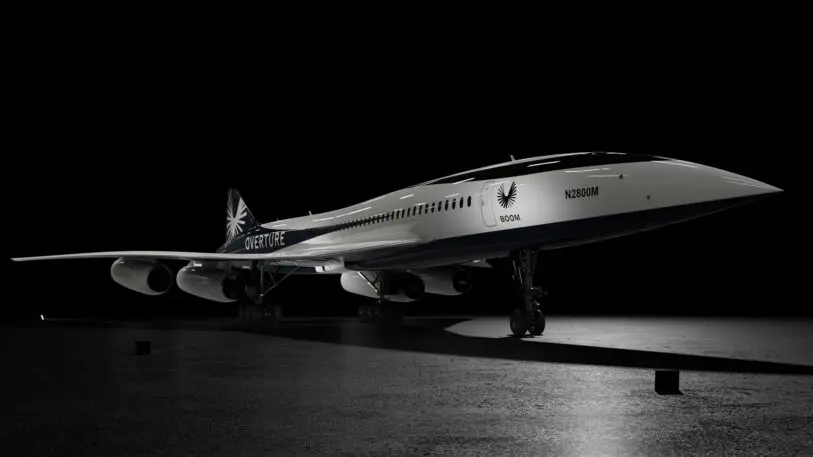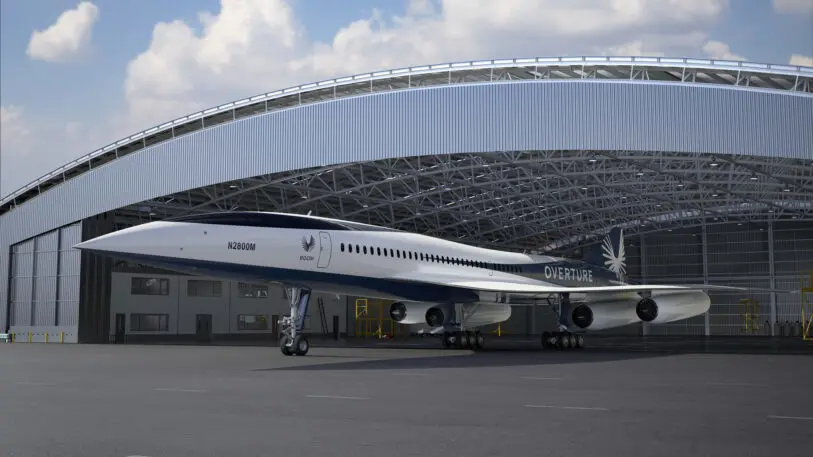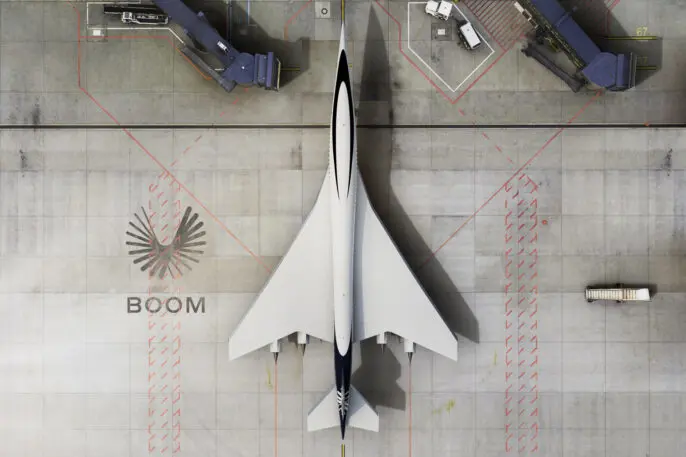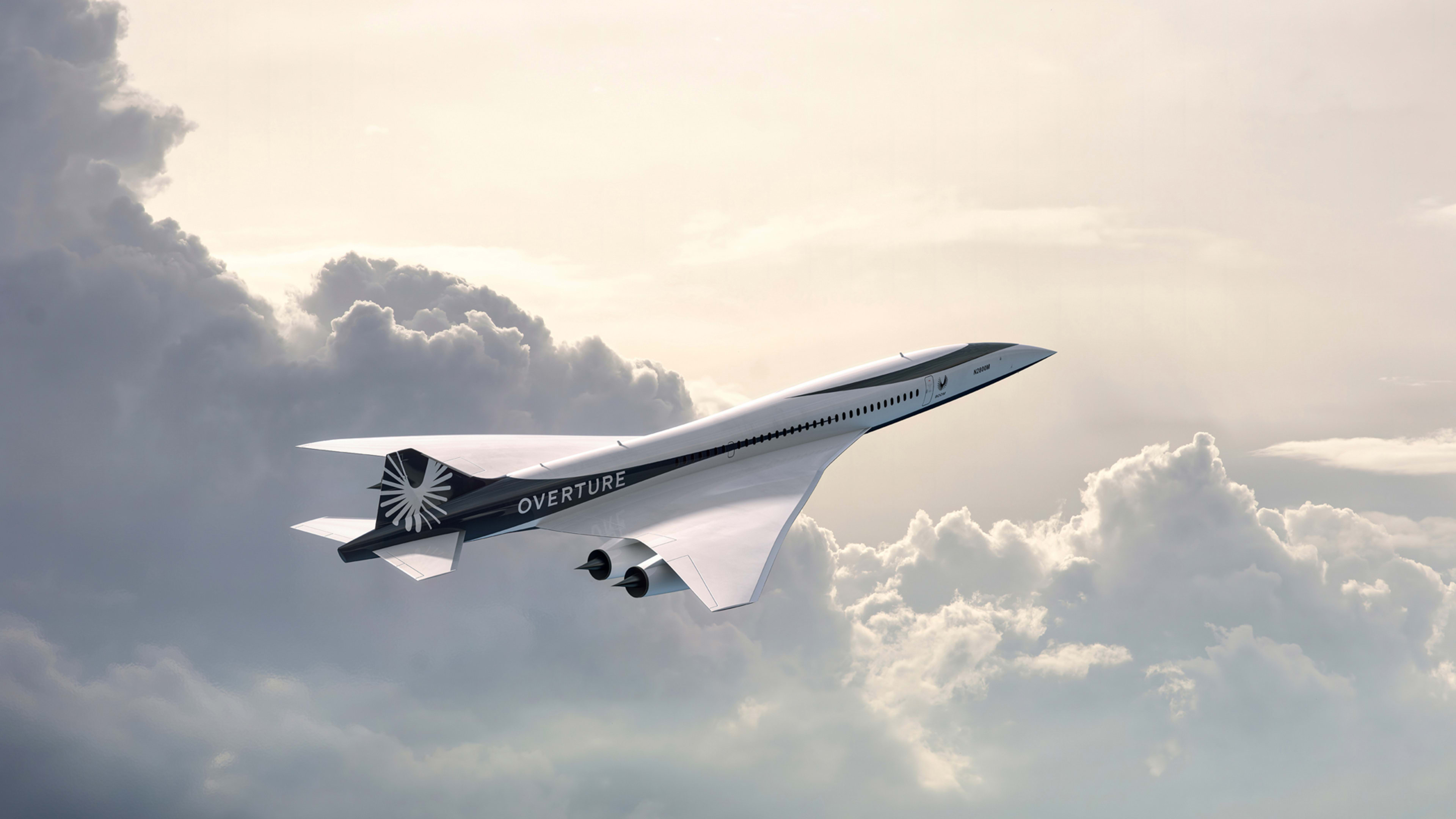With a refined design announced Tuesday for its Mach 1.7 Overture jet, Boom Supersonic’s dream of reviving exceptionally fast commercial air travel looks a little more real. But this update to Overture, a small airliner in the works since 2016, still leaves a key component undefined.
The biggest change in the configuration that Denver-based Boom unveiled at the Farnborough International Airshow outside London is an added engine: Overture now features four instead of the previous design’s three.
The new design places each engine in a separate pod below Overture’s delta-shaped wing and features a carbon-composite fuselage that narrows above the wing for better supersonic aerodynamics (known as an “area rule” design). As a result, it looks less like the Concorde jets that crossed the Atlantic until 2003 at speeds just above Mach 2 and more like the Air Force’s 1956 vintage B-58 supersonic bomber.

He notes a twin-engine design, something shown in a 2016 rendering from Boom, would have required larger-diameter engines than the company could hope to adopt for supersonic flight.
With the move from three engines to four, the Overture jet’s range—4,890 miles—and fuel burn won’t change, Scholl says: “Everything we’ve been saying for the last few years about fuel efficiency about the airplanes remains true.”
Boom continues to tout Overture’s ability to fly on 100% sustainable aviation fuel, which can be made from such sources as spent cooking oil or carbon dioxide pulled from the air with direct-air-capture machines.
But the identity of the company that will build those engines remains up in the air. Boom signed a 2020 venture with Rolls-Royce to explore adapting one of that manufacturer’s current engines, but Scholl won’t say if Rolls would wind up building Overture’s engines. “We’ve been working behind the scenes on the engine for a very long time because it’s a fundamental component,” he says.
In a conversation at the Collision conference in Toronto in June, Scholl had previously indicated that the company would be able to modify a current subsonic engine and that Boom had “multiple options that are quiet, that are fuel efficient.”

Boom is, however, not aiming to reduce the loud sonic boom caused by Overture—a subject of recent government and industry research—and so will limit supersonic flights to over oceans, with overland speeds capped at just below Mach 1.
“Going for the softer levels of sonic boom comes with an efficiency debt,” Scholl says. “We just focus all of our efforts on fuel efficiency and put the sonic boom where nobody’s going to hear it.”
Boom predicts a flight from New York to London would take three and a half hours (down from about seven hours now), while Seattle to Tokyo would fly by in four and a half hours (down from the current 10). Japan-bound departures from much farther south on the West Coast, however, would require a refueling stop.
Boom’s announcement also suggests a change to Overture’s passenger accommodations. Earlier Boom renderings showed only one seat on each side of the aisle, but Scholl says that would change to a two-by-two layout in the front portion of the cabin, then two-by-one in the narrower fuselage above the wing. The jets are expected to have a range of 65 to 80 seats.
“It’s 65 in a very luxurious interior,” Scholl says. “At 80, it’s still nice, but it’s not as spacious. We’re working on an update to the interior, which we will be able to share earlier next year.”
Boom’s announcement also noted a partnership with defense contractor Northrop Grumman to develop “a special mission variant for the U.S. government and its allies.” Scholl describes one possible government-use case: “How many allies can the secretary of state visit in a day?”

Boom’s next step will be getting its smaller-scale XB-1 prototype flying, a step it once hoped to hit by the end of 2017. That jet rolled out of its Centennial, Colorado, facility late last year for testing on the ground, with test flights planned for later this year.
Next comes groundbreaking for its Greensboro, North Carolina, factory, followed by construction of the first Overture jet starting in 2024. That leaves five years to get the plane into flight tests, certified by government regulators, and delivered to airlines to meet Boom’s 2029 projected deadline for welcoming paying passengers on board.
That might seem like a lot of runway. But in the safety-driven, testing-ruled culture of commercial aviation, Boom will have to execute precisely many tasks in order to reach takeoff velocity on its planned schedule.
Recognize your brand’s excellence by applying to this year’s Brands That Matter Awards before the early-rate deadline, May 3.
